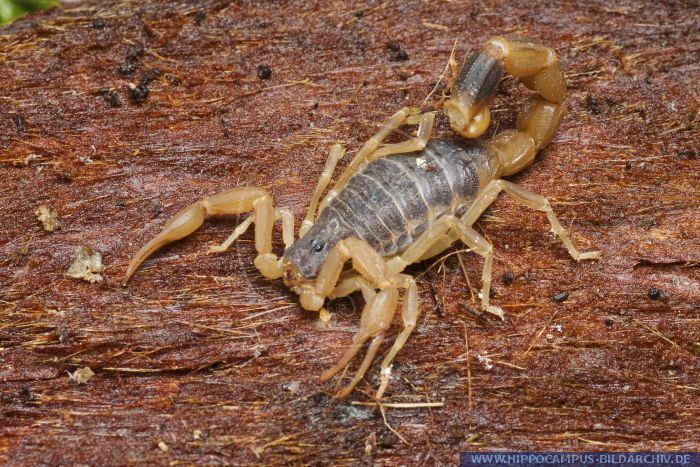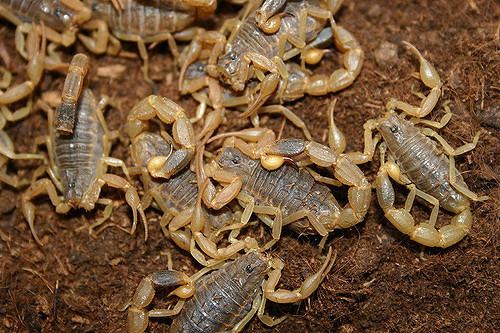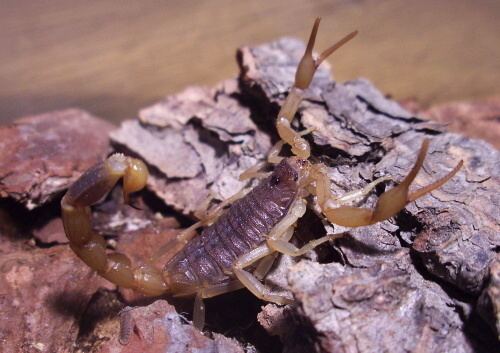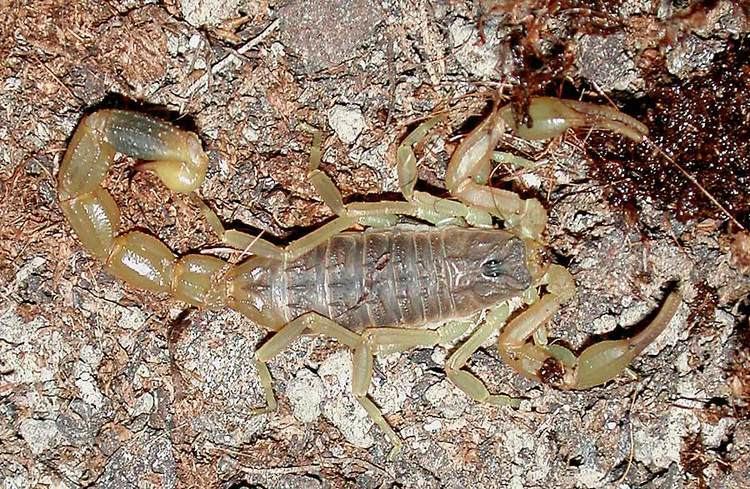Kingdom Animalia Order Scorpiones Genus Mesobuthus Higher classification Mesobuthus | Phylum Arthropoda Family Buthidae Scientific name Mesobuthus martensii Rank Species | |
 | ||
Similar Scorpion, Mesobuthus, Buthus, Buthidae, Androctonus australis | ||
Mesobuthus martensii hl
Mesobuthus martensii is a species of scorpion in the family Buthidae. Its common names include Chinese scorpion, Manchurian scorpion, Chinese armor-tail scorpion and Chinese golden scorpion. Despite its common name, this scorpion is not only found in Manchuria or China, but also in Mongolia, Korea (North Korea) and Japan. Its preferred habitat is warm, dry areas with little vegetation. M. martensii can grow to about 6 centimetres (2.4 in) long, with females usually slightly larger, and has a life-span of about 4 to 6 years.
Contents
- Mesobuthus martensii hl
- Mesobuthus martensii mating video at 7 16 spermatophore
- Taxonomic history
- Uses
- References

Mesobuthus martensii mating video at 7 16 spermatophore
Taxonomic history

This species of scorpion was first described as Buthus martensii by German arachnologist Ferdinand Karsch in 1879. Independently, Simon in 1880 described specimens he found in the gardens of the summer palace at Peking (present-day Beijing) as Buthus confucius, which Karsch synonymized as Buthus martensii in 1881. Subsequently, in 1950, it was transferred to Mesobuthus, a new genus established by French arachnologist Max Vachon.
Uses

M. martensii, especially its tail, has been used in traditional Chinese medicine for many centuries to treat various neuronal problems, such as chronic pain, paralysis, apoplexy and epilepsy. Over the past few decades, dozens of novel proteins in this scorpion's venom have been identified, cloned and investigated for clinical applications. For instance, at least 51 long-chain peptides related to the sodium channel toxins and 18 peptides related to the potassium channel toxins have been described, along with two peptides, BmK AS and AS1, that act on ryanodine receptors. Apart from having analgesic properties, BmK AS is also the first long-chain scorpion peptide reported to have antimicrobial activity. Amongst the sodium channel-specific neurotoxins, there are a number of muscle relaxants, such as makatoxin I and bukatoxin, while BmKAEP and BmK IT2 have shown anticonvulsant activity in experimental conditions, inhibiting epileptic seizures induced in rats. BmK AGAP has both analgesic and antitumor properties and recombinant proteins could potentially be used in anticancer treatments.


